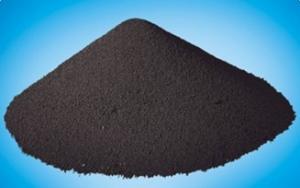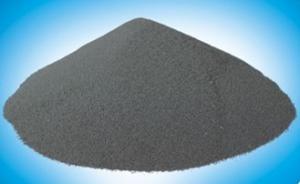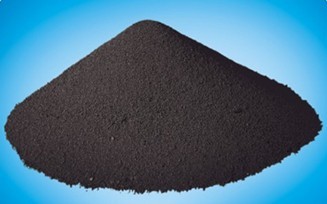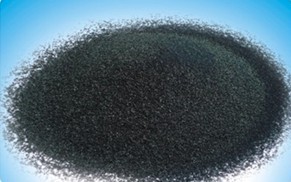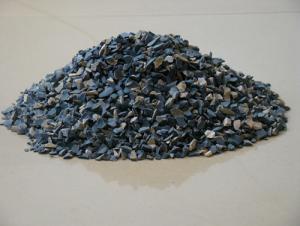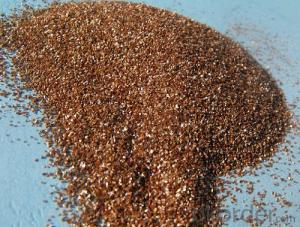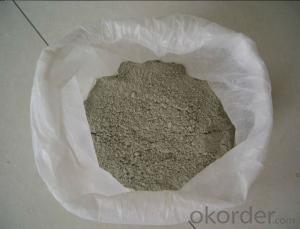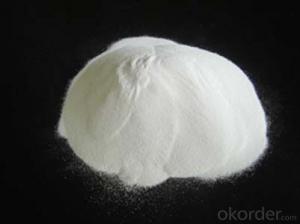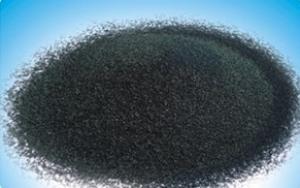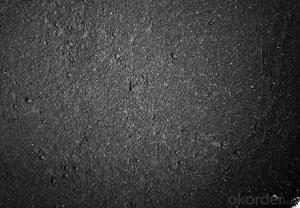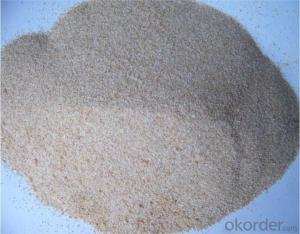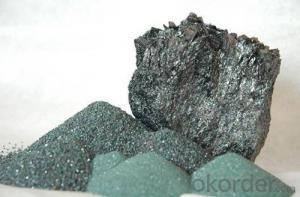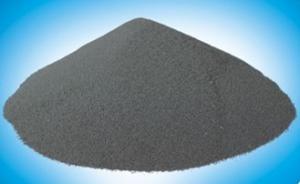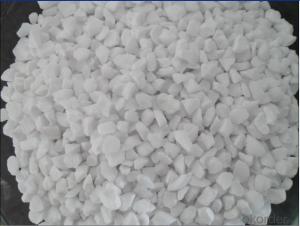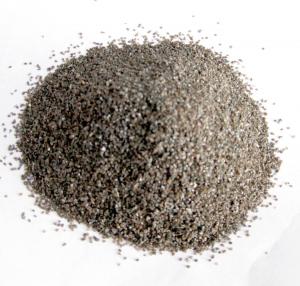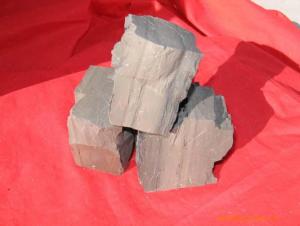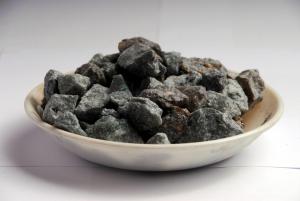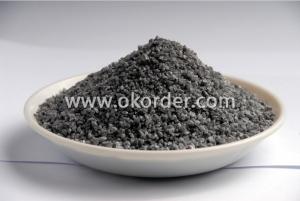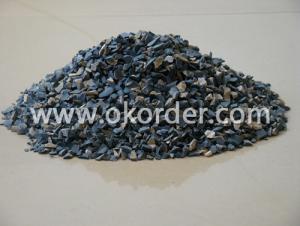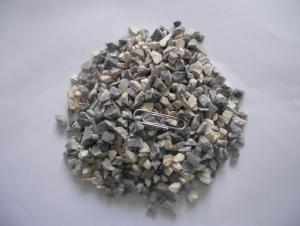Tudish Ladle Insulation Agent - Raw Materials for Refractory
- Loading Port:
- China Main Port
- Payment Terms:
- TT OR LC
- Min Order Qty:
- -
- Supply Capability:
- -
OKorder Service Pledge
OKorder Financial Service
You Might Also Like
Tudish, ladle insulation agent Product description In order to meet the continuous casting supporting service, combined with steel ladle lining material and different, my company research and development the LF series insulation agent. The slag series press carbon content is divided into: high carbon, medium carbon, low carbon, no carbon; According to the basicity partial acid and alkaline divided into; According to the slag powder and granular form into, so in use, can according to the specific conditions of continuous casting are chosen, it has spread out performance is good, insulation is strong, not crusting, don't include line erosion, adsorption mingled with performance is good, not pollution advantages of molten steel, well received by users. The product model: LF-XJ Applicable kinds: of carbon-steel, optimal carbon steel, low alloy steel, etc Applicable section: all kinds of continuous casting slab shape of form a complete set of ladle, tundish. Main physical and chemical indexes su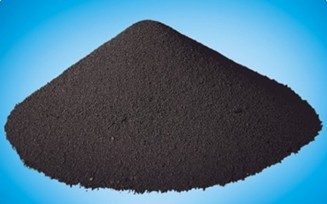
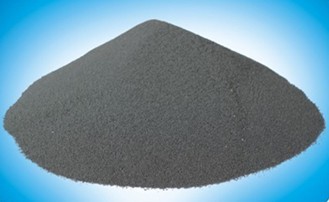
name | High carbon carbon low carbon carbon basic |
model | XJ-1 XJ-2 XJ-3 XJ-4 XJ-5 |
water | ≤2% ≤1% ≤1% ≤1% ≤1% |
Particle size | ≤3mm ≤-100mm ≤2mm ≤2mm ≤2mm |
Carbon content | 20~40% 10~20% ≤6% --- 10~25% |
Cao/Sio2 | --- 0.5~1.0 ≥0.90 ≥0.90 1~3.5 |
- Q: What do RH and DH stand for in refractories?
- The English abbreviation depends on where it is used, and the meaning is judged according to the actual situation. Some are not standard, even the abbreviation of Chinese phonetic alphabet. The dictionary looks up the meaning of these two abbreviations and writes them according to the specific situation!END: Arrow-head definition file (CorelDraw) Arrow-head definition file (CorelDraw)End: endocrine endocrine secretions.END: Endorphin endorphinsEND: End of Data data.END: Electronic Null Detector electronic instrumentEND: Endorse/Endorsed/Endorsing/Endorsement / / support / endorsement endorsement endorsementEND: European Nuclear Disarmament European nuclear disarmamentEND: Exchange Name Documentation exchange file nameEND: Enhanced Network Driver (multiple protocols on a single driver) enhanced network driver (multi protocol driver in a single)
- Q: Procedures for producing common refractory materials?
- The general procedures of producing refractory materials include calcination of raw materials, selection of raw material , crushing, grinding, screening, mixing, ageing mixture, molding, drying, burning and etc. At present, the refractory factory usually purchases the calcined clinker, so the calcination of raw material is no longer a consideration of common refractory plants.
- Q: What refractories are accessible with ease in daily life?
- Refractory mortar. Thermal insulation refractory materials include diatomite products, refractory castables, monolithic?refractories, carborundum bricks, gun-mix refractories, semi-silica bricks, borides, beryllia, silicide, calcium oxide, high alumina refractory brick, refractory coatings, corundum bricks, fireclay?bricks, silicon nitride bonded silicon carbide bricks, chromium hemitrioxide and other refractories. What refractories can be found mostly in the market? Common refractories. Common refractories include silica bricks. The mostly used unshaped refractories include fettling, ramming refractories, castable refractories, plastic refractories, refractory clay, gun-mix refractory, sling refractories, refractory coatings, lightweight refractory castables, stemming etc. The mostly used insulating refractories include diatomite products, asbestos products, insulation panels, etc. The mostly used special refractories include AZS bricks.
- Q: who knows how to classify the fire resistant levels of fireproofing material?
- Materials used in construction are called construction materials. The combustion performance of construction materials refers to all physic and chemical changes happened when burning or contacting fire, the properity is measured by combustibility of material surface and flame transmission, heating, smoke,charring, weightlessness, and the producing of toxicity resultant. Our national standard GB8624-97 classifies the combustion performance of construction materials into following several levels. Class A: Incombustible building material, class B1: Nonflammable building material, class B2: Combustible?building?materials, class B3: Inflammability construction materials, generally speaking: first fire resistant level construction is the mixed construction of reinforced concrete structure or brick wall and steel concrete structure; second fire resistant level construction is the steel structure roof truss, reinforced concrete column or mixed structure made by brick wall; third fire resistant level construction is the wood and brick made by wooden roof and brick wall; fourth fire resistant level one is the combustible?structure made by wooden roof, hard-comnustible component wall.
- Q: Who knows how many kinds of fireproof insulation materials are there in the market?
- Portland cement, insulation stone, calcium powder and platycodon grandiflorum are the main raw materials of inorganic active insulation materials. Advanced manufacturing techniques and chemical Technologies have been used to conduct many tests, thus the close-celled inorganic active insulation materials are successfully developed. Products have advantages of fire-resistance, small deformation coefficient, aging-resistance, stable performance, environmentally-friendly, and good compatibility with rendering coating and subtractive wall, security, stability, and also have a life as long as the building itself. Good fireproofness: The materials of fireproof insulation board are inorganic (cement) which has A1-level fire-resistance, are non-combustible materials, and good at resisting fire. I hope my answer can help you.
- Q: Which one is better, fire-resistant wood or steel?
- Rebar would weaken and quickly collapse in the fire, and the fire resistance of a heavy log is much better than steel. In many ways, the fire resistance of a large log is equal to reinforced concrete. The heat transfer capacity of wood is 400 times smaller than steel, 8.5 times smaller than concrete. When burning, wood will form a layer of carbon in the surface, and as long as the cross-section of the timber is over a certain size, this layer of carbon it will become an excellent flame retardant layer to protect the interior of the wood from burning. So the United States and Japan and other European countries allow and encourage the use of wood structure with a large section (beam column of 8 inches or more) to construct public buildings without the need for fire treatment applied to wood surface. I hope my answer will be helpful to you.
- Q: Who knows the external wall thermal insulation materials fire rating requirements?
- The basic requirements of ratings. The design should comply with relevant state regulations and standards, the combustion performance used in exterior insulation material shouls be level A and not less than the level B2 fireproofing material. The requirements of Department of Housing and the Ministry of Public Security No. 46: Residential buildings: the height of building is greater than 100 meters, the combustion performance of insulation materials should be level A. The other civil buildings: 24≤ height
- Q: The performance of refractory material
- As for easticity modulus, you can serach for information on the Internet or specialized books.
- Q: What are the requirements on fire resistance period of C-level fireproof glass?
- Class C: The fireproof glass which only meets demand of fire integrity. This glass has advantages of transmittance, fireproofing, smoke resistance and high intensity. It can be applied to fireproof glass partition walls, fire windows and with no requirements on outdoor curtain walls, etc. The fireproof glass can be classified as composite fireproof glass and single chip fire-proof glass in terms of structure. Class B: The fireproof glass which meets demands of fire integrity and thermal radiation intensity at the same time. This glass is mostly composite fireproof glass which has advantages of transmittance, fireproofing, and smoke resistance.
- Q: What are grades of refractory materials?
- Refractories have lots of varieties which all have different purposes. It is necessary to classify refractories scientifically in order to scientifically study, choose and manage them. Classification methods of refractories include chemical properties classification, chemical composition of mineral classification, manufacturing technique classification, morphology of the material classification. 1 divided according to the level of refractoriness: ordinary refractory materials: 1580 ℃ ~ 1770 ℃, advanced refractories: 1770 ℃ ~ 2000 ℃ and super refractories: above 2000 ℃ 2, divided in accordance with shapes and sizes : Standard ones: 230mm × 113mm × 65mm, no more than four ruler.
Send your message to us
Tudish Ladle Insulation Agent - Raw Materials for Refractory
- Loading Port:
- China Main Port
- Payment Terms:
- TT OR LC
- Min Order Qty:
- -
- Supply Capability:
- -
OKorder Service Pledge
OKorder Financial Service
Similar products
Hot products
Hot Searches
Related keywords
